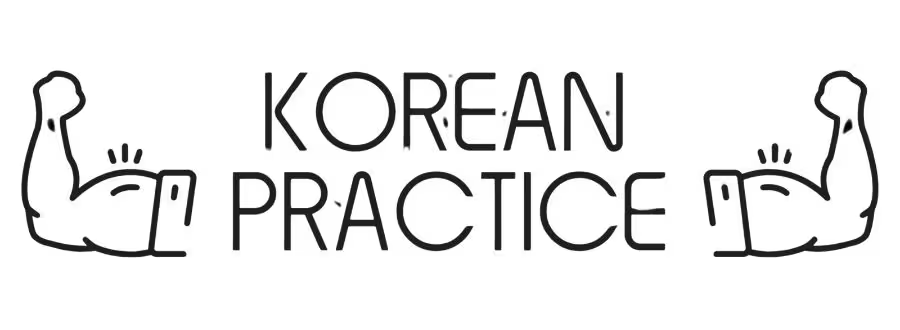Suh ChangWhoon
Written by 서 창훈, a certified Korean teacher with 14+ years of experience in Japan. He previously worked as a government officer, cybersecurity consultant, and English interpreter. Today, he teaches Korean in real classrooms without complex grammar explanations — instead, he trains students’ brains to speak naturally. His unique method is now the foundation of all his Korean courses.
Table of Contents
마음에 들다 meaning in English
The Korean phrase 마음에 들다 meaning in English translates to “to like,” “to be pleased with,” or “to appeal to one’s taste” in English.
- 마음: Heart, mind, or feelings.
- 들다: To enter or go into.
When combined, 마음에 들다 meaning in English is something has “entered your heart,” indicating that it suits your preferences or makes you happy.
마음에 들다 Nuances and Usage
Common Situations for Usage:
- Personal Taste
- Often used when expressing your liking for clothes, food, or objects.
- Approval of a Situation
- Describes satisfaction with an event, atmosphere, or setting.
- First Impressions
- Used when someone or something leaves a good impression on you.
Watch this short Korean story
See how easy learning can be. Real sentences, clear pronunciation, no stress.
마음에 들다 Example 1
Original Korean Sentence
이 집이 마음에 들어요.
Pronunciation Guide
이 (i) 지비 (ji-bi) 마으메 (ma-eu-me) 드러요 (deu-reo-yo).
Meaning and Context
이 (this) 집 (house) 이 (my subject is this house) 마음 (heart, feeling) * 에 (at) * 들 (to please, to suit) 어요 (I’m telling you polite and friendly).
Grammar
에: Indicates a metaphorical place where feelings or impressions settle.
들어요: Present tense polite form of 들다 (to enter, to suit).
Culture
In Korean, liking something is often expressed by saying that it “enters the heart,” giving a warm and emotional nuance.
English Translation
I like this house.
Literal Translation
This house suit at (my) heart.
Want to learn another interesting Korean expression? Discover the 3 surprising meanings of 미역국을 먹다 →
This is just a small taste of my sentence breakdowns.
My “Story Style Breakdown™” method — where I teach grammar through simple, story-like sentence breakdowns—is only inside my course.
Most Korean courses stop at grammar. Mine goes beyond — with stories, breakdowns, and real practice to help you speak.
마음에 들다 Example 2
Original Korean Sentence
새로운 디자인이 마음에 들어요.
Pronunciation Guide
새로운 (sae-ro-un) 디자이니 (di-ja-in-i) 마으메 (ma-eu-me) 드러요 (deu-reo-yo).
Meaning and Context
새로운 (new) 디자인 (design) 이 (my subject is new design) 마음에 들어요 (I like it): 마음 (heart, feeling) + 에 (to) + 들다 (to enter) 어요 (I’m telling you polite and friendly).
English Translation
I like the new design.
Literal Translation
New design enter to (my) heart.
Love Korean dramas? Explore 5 Best Korean Love Story Dramas to Learn Real Dialogue →

마음에 들다 Example 3
Original Korean Sentence
생일 선물이 마음에 들었으면 좋겠어요.
Pronunciation Guide
생일 (saeng-il) 선무리 (seon-mu-ri) 마으메 (ma-eu-me) 드럿쓰면 (deu-reot-sseu-myeon) 조켓써요 (jo-ket-sseo-yo).
Meaning and Context
생일 (birthday) 선물 (gift) 이 (subject marker) 마음에 들었으면 (if you liked it): 마음 (heart, feeling) + 에 (at) + 들다 (to please, to suit) + 었 (past tense) + * 으면 (if) 좋겠어요 (I hope so): 좋다 (to be good) + 겠 (expressing hope or desire) 어요 (I’m telling you polite and friendly).
Grammar
* In Korean, expressing hope for someone else’s feelings is often done with “-으면 좋겠어요,” showing a thoughtful and polite wish.
English Translation
I hope you liked the birthday gift.
Literal Translation
If birthday gift pleased (your) heart, (that) would be good.
Confused about Korean ages? Understand the Korean Age System and Why Age Matters So Much →
What does “배가 아프다” really mean? Learn 2 meanings of 배가 아프다: pain and jealousy →
This teaching format is original and developed by [Korean Practice]. Please don’t copy or reproduce without permission.
FAQs (What You Might Still Wonder About)
1.❓Is “마음에 들다” used in formal situations?
Yes, it can be! “마음에 들다” is versatile and works in both casual and formal contexts. In polite speech, you’d say “마음에 들어요”, and in formal business or customer service situations, you might hear “마음에 드십니까?” or “마음에 드셨나요?” to show respect.
2.❓What’s the difference between “좋아하다” and “마음에 들다”?
Great question! “좋아하다” is a general verb for “to like,” while “마음에 들다” has a more emotional or instinctive nuance — it’s like saying something really clicked with your heart. If you’re talking about first impressions or aesthetic taste, “마음에 들다” often sounds more natural.
3.❓Can I use “마음에 들다” in the past tense?
Yes! If you liked something in the past, just use the past tense form: “마음에 들었어요.”
For example:
그 영화가 정말 마음에 들었어요.
(I really liked that movie.)
It’s super common when talking about gifts, experiences, or people you’ve already met.
4.❓Is there a negative form of “마음에 들다”?
Yes, and it’s very useful! You can say “마음에 안 들어요” to mean “I don’t like it” or “It doesn’t suit my taste.”
For example:
이 색깔이 마음에 안 들어요.
(I don’t like this color.)
It sounds natural and not too harsh — great for expressing your preferences politely.
5.❓Can I use “마음에 들다” to talk about food?
You can, especially when talking about how much you liked the taste or presentation.
Example:
이 요리가 정말 마음에 들어요.
(I really like this dish.)
But if you’re just saying it tastes good, “맛있어요” is the more direct way. “마음에 들다” adds a nuance that you liked everything about it, not just the flavor.
🚀 Want to read Korean faster? Check out 4 speed reading strategies that really work →
🎁 Free Korean Flashcard
Final Thoughts
Learning 마음에 들다 meaning in English equips you with a natural way to describe your preferences in Korean. Whether it’s about gifts, places, or people, this expression is a must-know for any Korean learner.
Want to learn Korean in a fun and easy way? Explore my Story Courses and elevate your skills!
💡 Need a cultural overview of Korean emotions in language? See 11 untranslatable Korean words on CultureTrip →








